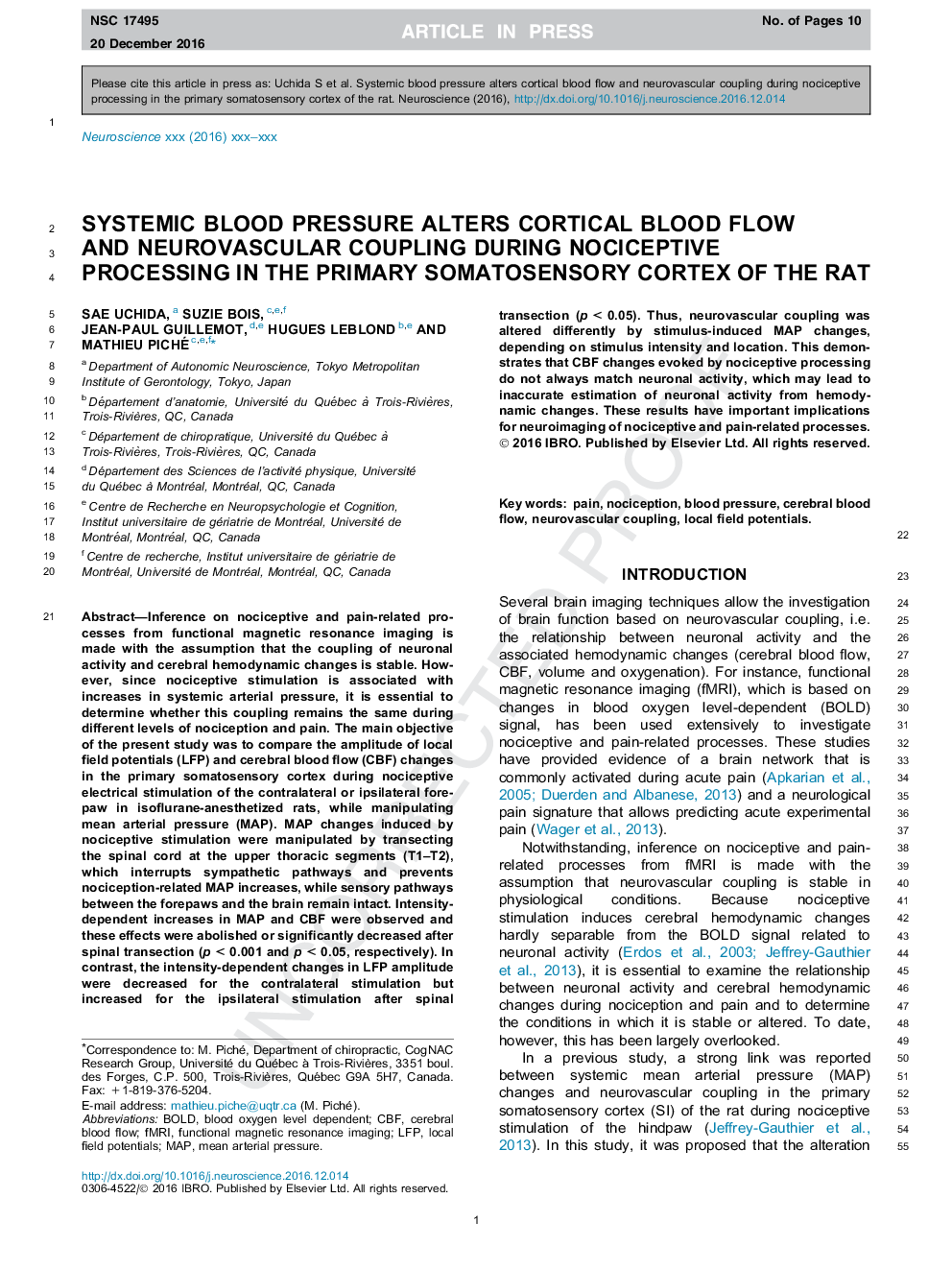ترجمه فارسی عنوان مقاله
فشار خون سیستمی باعث تغییر جریان خون قشر و اتصال عصبی عضلانی در طی پردازش غضروف نشده در قشر سومیوسنسور موش صحرایی
عنوان انگلیسی
Systemic blood pressure alters cortical blood flow and neurovascular coupling during nociceptive processing in the primary somatosensory cortex of the rat
| کد مقاله | سال انتشار | تعداد صفحات مقاله انگلیسی |
|---|---|---|
| 128692 | 2017 | 10 صفحه PDF |
منبع

Publisher : Elsevier - Science Direct (الزویر - ساینس دایرکت)
Journal : Neuroscience, Volume 343, 20 February 2017, Pages 250-259

